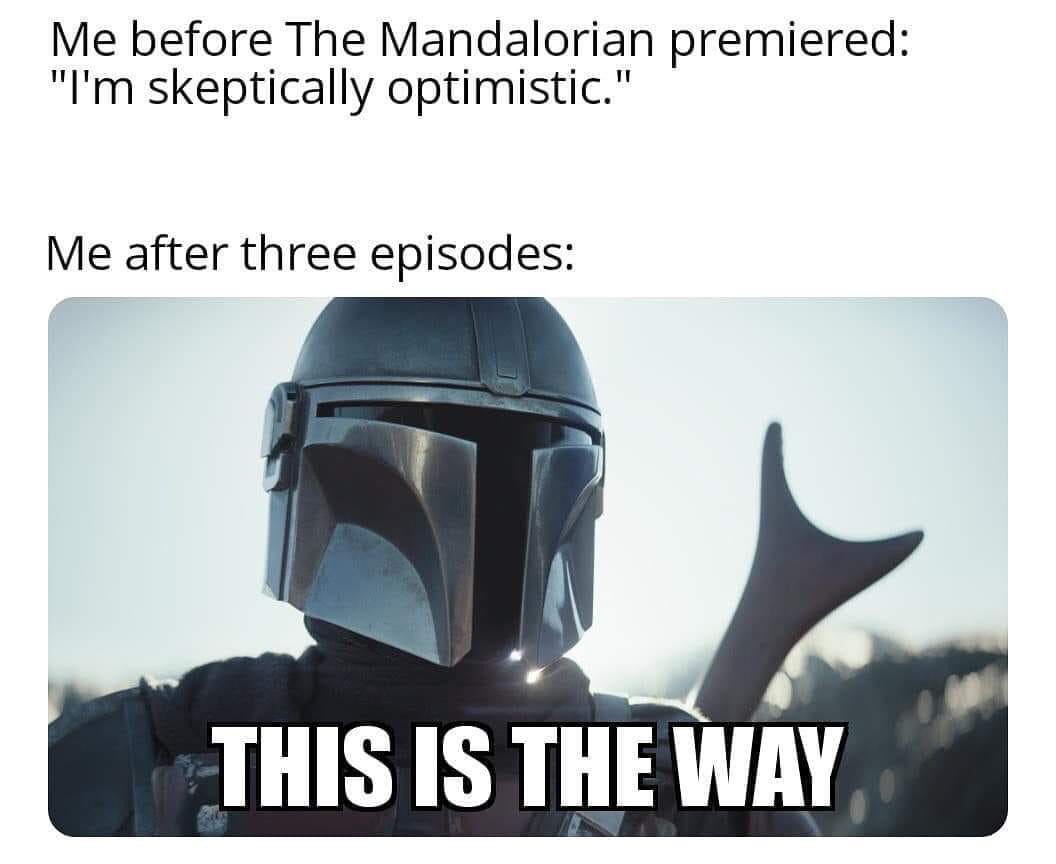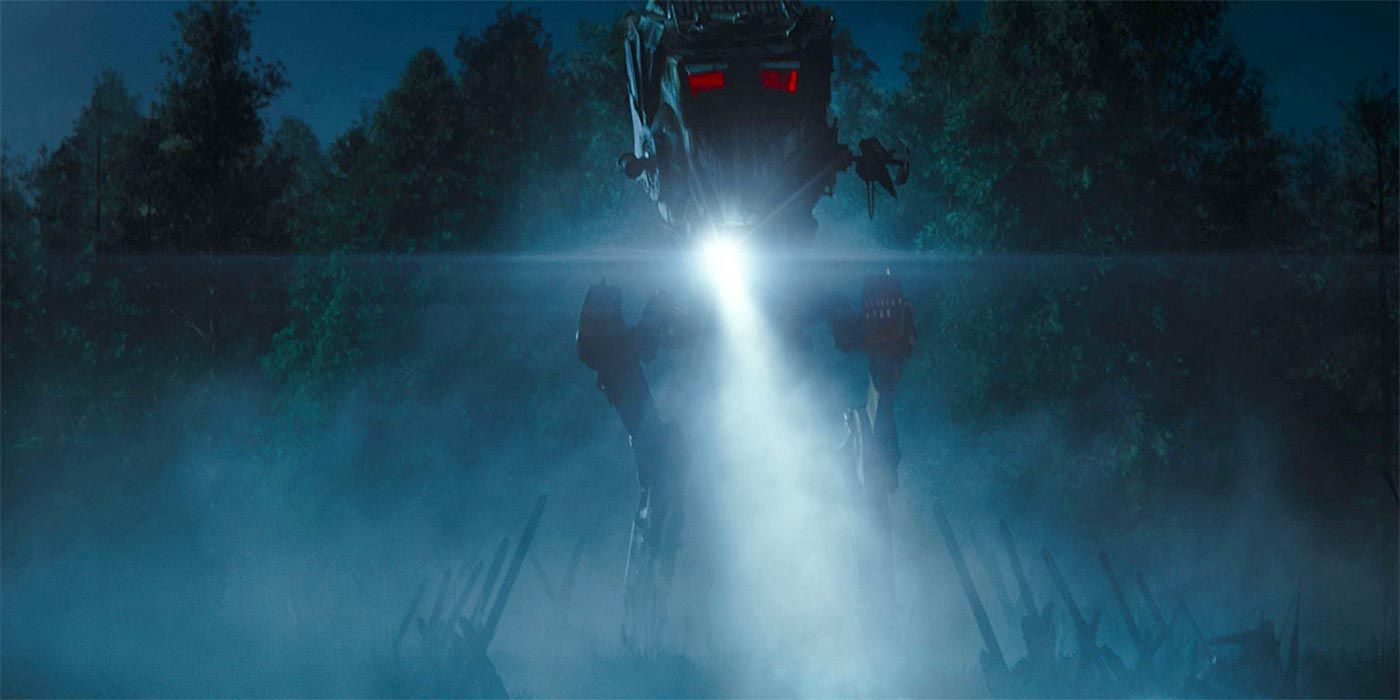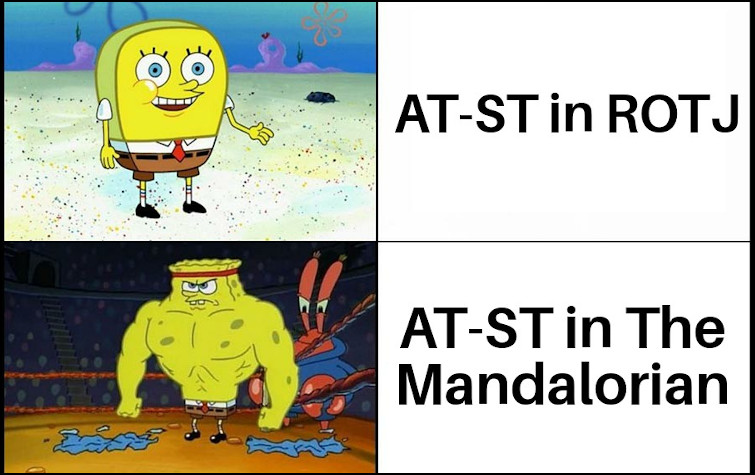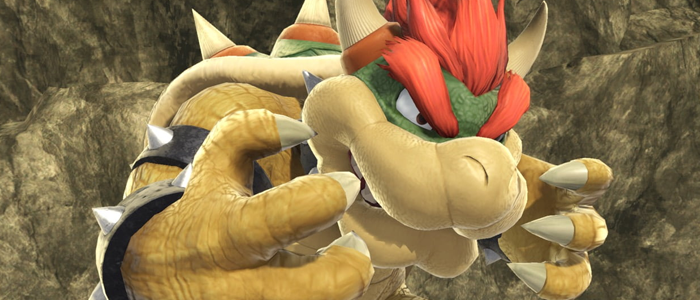Between movies, comics, and video games, I’ve seen and taken part in the destruction of a whole lot of Imperial All-Terrain Scout Transports. AT-STs are mostly there to give the heroes something larger than usual to destroy.
Not in The Mandalorian.
The Mandalorian
In case you saw the memes and assumed The Mandalorian is all Baby Yoda and “this is the way,” it is one of the best original shows streaming today, and has the best storytelling of possibly anything in a galaxy far, far away. 
One of the reasons it succeeds in that regard is its ability to look at the Star Wars universe through the eyes of someone in it. Characters contemplate their actions and react to the consequences. Death affects these characters in a way that really makes Luke Skywalker look heartless for shrugging off his adopted parents’ crispy corpses.
In The Mandalorian, a 20m tall metal monstrosity with lasers in its face is treated more like a wild T-Rex than an extra tall Storm Trooper.
The Presentation of the AT-ST
What separates the AT-ST in The Mandalorian from AT-STs in other Star Wars media is the presentation:
- It is introduced through rumour and reputation. They learn about what an AT-ST can do by exploring what it has done. Even though the whole audience can be expected to be familiar with AT-STs, and may have even seen in a thumbnail that an AT-ST featured in this episode, this investigation scene didn’t drag because it mattered to the characters.
- It is shot from underneath, emphasizing its size. As opposed to when AT-STs debut in Empire Strikes back, in the shadow of the AT-ATs. Or worse, in Return of the Jedi when the camera is at the AT-ST’s eyeline, mostly to put ourselves in its perspective when it falls for the ewoks’ traps. The only AT-ST that feels threatening is the one that turns out to be piloted by Chewbacca and an ewok or two and a new Rebel toy.
- The red cockpit light not only gives this AT-ST a distinct visual, the contrast of such a loaded colour and the night setting gives it a diabolical look.
Learning From This Presentation
The Star Wars fanbase’s familiarity with the AT-ST is similar to our players’ familiarity with the creatures in the Bestiary. Most are based on known entities, so our descriptions can be as minimal as “you see an orc” and the players will know enough to create a visual in their head and know what kind of threat to expect.
However, it’s important that we remember a creature’s threat level is relative. You can throw dozens of orcs at a high level party and they’ll feel as impotent as a fleet of Star Destroyers armed with Death Star canons. However, at low level, a single orc can feel as dangerous as a single AT-ST.
Implementation
How our mighty GM Crystal Frasier handled The Iron Lash in episode 25 of Adventurous http://knowdirectionpodcast.com/2019/09/adventurous-025-lashing-out/ is similar to how The Mandalorian handled the AT-ST. It was not a creature we felt particularly threatened by under normal circumstances (vagueness to avoid spoilers), but she description reminded us that this creature should terrify us. Additionally, it had minor tweeks to its details that set it apart from the typical creature of its kind. As a player in that encounter, I could not tell you whether this creature had a unique statblock or just a unique description. I can tell you that it felt like it could kill us all if we weren’t lucky, and that killing it was truly satisfying.
When you are deciding how detailed your description should be, Table 10-1: Encounter Budget on page 489 of the Core Rulebook is your friend. Like The Mandalorian didn’t take an AT-ST for granted, you shouldn’t dismiss that chart’s use of words like severe and extreme. It doesn’t matter if the players have killed the types of creatures in your 1st level adventure a million times over their years in the hobby, if this is the character’s first time encountering this creature, ask yourself how that would feel.
It’s why the goblins in Burnt Offerings were so memorable, and in a lot of ways those goblins are why Pathfinder became so successful so quickly.
Conclusion
What is more satisfying for the players? Slaying an orc that felt like a champion of their tribe, or slaying Rando orc #1? What is easier to accept, having trouble and maybe even getting knocked out or killed by a champion or a Rando?
What is more satisfying for us as GMs? Running just another Rando orc encounter, or introducing your players to Red Eyes, champion of the Aytee Hesty tribe, and seeing them cower and strategize?
Every two weeks, Ryan Costello uses his experience as a Game Master, infused with popular culture references, to share his thoughts on best GMing practices to help his fellow GMs. Often deconstructing conventional wisdom and oft repeated GMing advice, he reminds his fellow GMs that different players play the game in different ways, and for different reasons.







